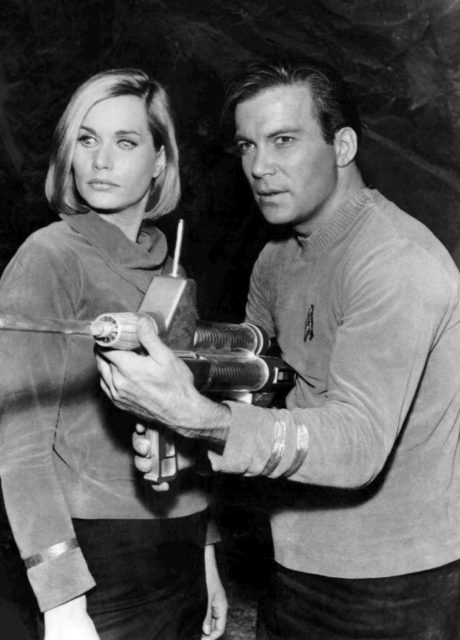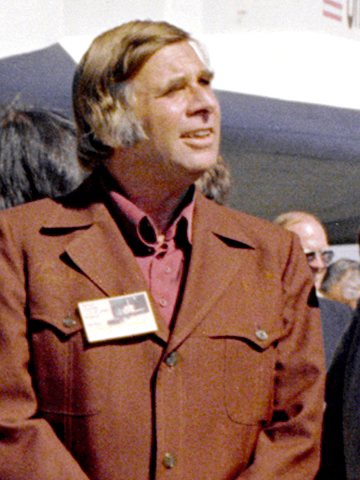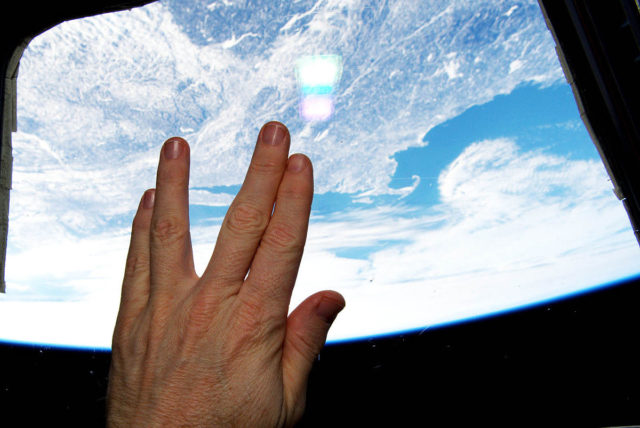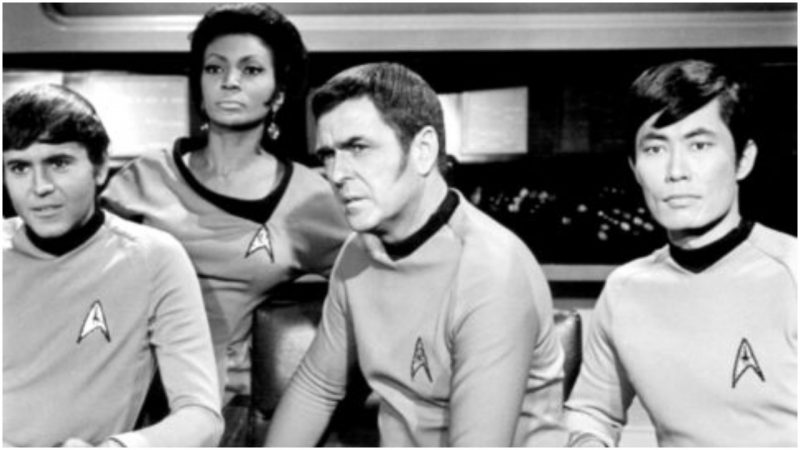Undoubtedly, Star Trek is one of the most influential science fiction TV series in history. The first original episodes aired during the 1960’s; and since then, during a time span of six decades, the show incarnated in some other memorable series and films.
That has been more than enough time for some lines and catchphrases used in Star Trek, which virtually have gain an iconic status. Even if you have not watched a single episode, the chances are that you already know a line or two.
“To boldly go where no man has gone before…”
By far, Star Trek has one of the most famous opening narrations in the history of filming industry. Resonating a feeling of the 1960’s futuristic optimism, the iconic phrase was first spoken by William Shatner who starred as Captain James T. Kirk in the original series.
The full narrative goes: “Space: the final frontier. These are the voyages of the starship Enterprise. Its five-years mission: to explore a strange new world, to seek out new life and new civilizations, to boldly go where no man has gone before.”

The narration was used in each episode in the original series, except for the two pilot ones, The Cage and Where No Man Has Gone Before. The phrasing was first introduced by Samuel Peeples, who also authored the second pilot episode, Where No Man Has Gone Before. He had devised the final version of the wording along with creator Gene Roddenberry and the producers John D. F. Black and Bob Justman.
Gene also had a proposal of his own, which reads as follows: “This is the adventure of the United Space Ship Enterprise. Assigned a five-year galaxy patrol, the bold crew of the giant starship explores the excitement of strange new worlds, uncharted civilizations, and exotic people. These are its voyages and its adventures.”

Gaining tremendous popularity, the opening narration was further used in other reincarnations of the TV series. In the reboot Star Trek: The Next Generation, the phrasing got slightly tweaked and “its five-year mission” was changed into “its continuing mission,” as well as the final most famous part was changed to sound gender-neutral, “where no one has gone before.”
Some reports suggest that the opening was inspired by a 1958 White House press booklet entitled Introduction to Outer Space that promoted space program in the wake of Sputnik flight. Others suggest that it was devised by a statement given by the 18-th century British explorer, navigator, cartographer and Royal Navy captain, James Cook. Reportedly, Cook had declared, following an early expedition to Newfoundland, that his intentions are not to go “further than any man has ever been before, but as far as I think it is possible for a man to go.”
“Live Long and Prosper.”
The popular Vulcan greeting “Live long and prosper” that goes along with a finger-separating hand gesture, first appeared in 1967, also during the original series, in an episode called Amok Time. Late actor Leonard Nimo,y who portrayed the mixed human-Vulcan in the show, Mr. Spock, had explained in his biography I Am Not Spock that he had been the one to come up with the greeting and hand gesture. Nimoy had invented the greeting based on a traditional Jewish blessing he remembered from childhood when his grandfather took him to an Orthodox synagogue.
In the Jewish version, the blessing is done in a slightly different manner, allowing the fingers to form the Hebrew letter “Shin.” The letter connotes “El Shaddai,” referring to “Almighty (God),” but also “Shekinah” and “Shalom.”
Nimoy had reinvented the gesture by holding up just one hand instead of both and changing the wording.
“Resistance is futile.”
One of the most notorious creatures to be remembered from the Star Trek is the Borg. The line “Resistance is futile” was first uttered by the evil robotic aliens in the grand third-season finale of the Star Trek: The Next Generation. The episode aired in 1990 and went down in history as one of the most epic cliffhangers in television history.
The evil Borg built their wicked image due to the collective audio messages they would submit to their target. An example from the Next Generations is as the following: “We are the Borg. Your biological and technological distinctiveness will be added to our own. Resistance is futile.”

Another variant, as used in the film Star Trek: First Contact from 1996 goes as: “We are the Borg. Lower your shields and surrender your ships. We will add your biological and technological distinctiveness to our own. Your culture will adapt to service us. Resistance is futile.”
The Trekkies will obviously never forget when Patrick Stewart delivered the line once he was assimilated by the Borg himself in the season three finale. The line has made Stewart entering the top 100 list of greatest TV Quotes and Catchphrases issued by the TV Land. “Resistance is futile” embedded in popular culture and was reused in numerous films, series or songs.
“Make it so.”
Last but not least, “make it so” is one of the signature lines of Jean-Luc Picard. The line became memorable since the pilot episode of the Star Trek: The Next Generation, entitled Encounter at Farpoint.
The episode was written by Gene Roddenberry himself, so most probably he was the one to put the line in the script.
Although the phrase resembles a military command, it got very popular thanks to the special way Patrick Stewart pronounces it. Another example of his brilliant catchphrases is also “Engage.”
This certainly adds to the reason why so many Trekkies favor Jean-Luc Picard as one of the best captains who appeared in the Star Trek.
